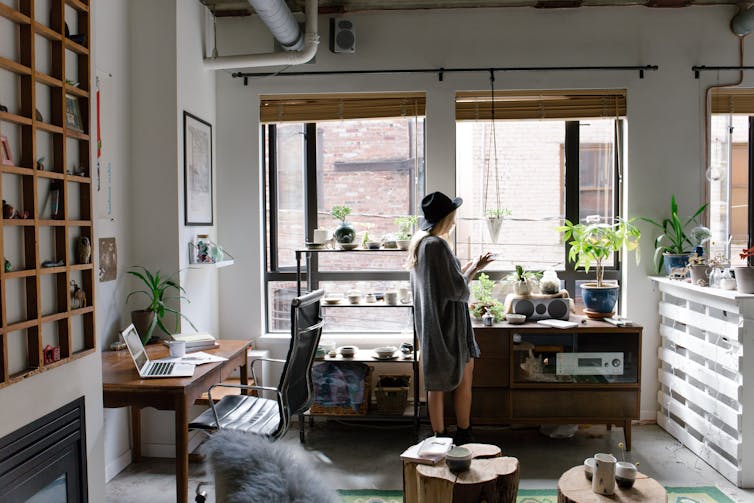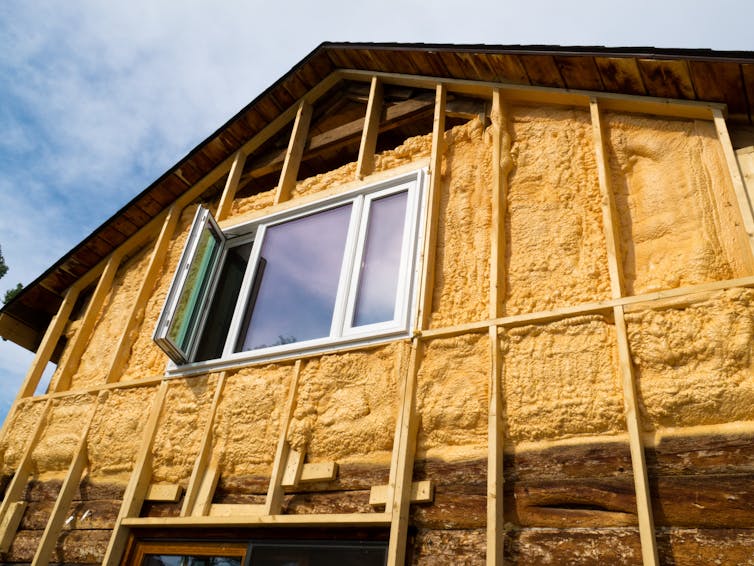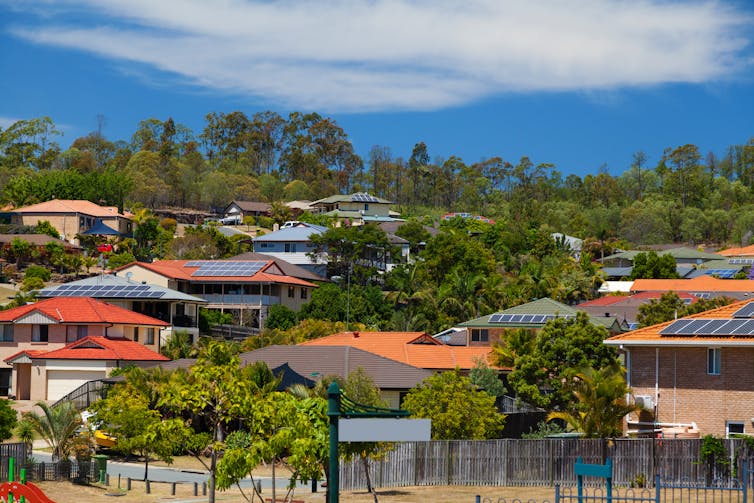If you are something like me, you are more and more performing from house, one that was constructed just before vitality effectiveness measures were introduced in Australia.
With temperatures along the east coastline plunging and electricity expenses skyrocketing, heating (and cooling) our houses is an energy intense, high-priced affair.
Virtually 8 million homes throughout Australia absence adequate insulation, use sub-par heating and cooling equipment, or are poorly developed.
Without a doubt, these 8 million pre-electricity rated households account for 18% of Australia’s greenhouse gas emissions. And research finds 26% of Australians throughout all housing varieties just can’t keep warm at minimum half of the time through wintertime.
Retrofitting this housing stock to be much more electrical power productive is essential to efficiently meet up with Australia’s focus on of chopping emissions 43% by 2030, whilst acquiring ease and comfort in our future of intensifying local weather extremes.
My investigate into web-zero emissions retrofitting identifies a few broad groups that ought to be regarded when retrofitting existing properties to be more weather pleasant:
-
visual ease and comfort: the ample top quality, quantity and distribution of mild
-
thermal comfort and ease: identified by the temperature, humidity, air flow and a person’s physical situation
-
electricity intake: the amount of electricity we use, and the energy made use of in manufacturing, transporting, setting up, retaining, and removing of supplies to make our properties.
1. Visual ease and comfort
It’s crucial to comprehend how significantly daylight the outdoors and inside of your home is uncovered to. Just one can, appropriately, re-organise inside functions primarily based on the demand from customers for lights, heating or cooling wants.
Through summer time, spaces utilized usually during the day, these as your household business, could reward from currently being in locations that obtain much less direct sunlight, so are cooler. In wintertime, look at shifting your home office environment established up to a space with higher ranges of direct sunlight, where by it is hotter.
This will naturally lower the volume of strength required to neat or heat these rooms though letting for snug doing the job conditions.
Other techniques we can discover much more visible comfort and ease incorporate modifying the sizing of home windows and skylights to permit in additional daylight. To diffuse harsh lighting, take into account incorporating screens, solar baffles, overhangs, or pergolas more than windows.
You can also substitute your lights with LEDs outfitted with linear controllers and movement sensors in locations in which lights have a tendency to be left on. LEDs use around 75% considerably less energy than halogen gentle bulbs.

Unsplash, CC BY
2. Thermal consolation
Older Australian properties are exceptionally draughty, and a great deal of the strength we spend cooling or heating our houses escapes outdoors thanks to weak insulation. Retrofitting to strengthen your home’s purely natural air flow can lessen the amount of times you need to have to change on the heater or air conditioner.
Sealing outside the house and interior surfaces till they are airtight is vital. Different surfaces – no matter whether partitions, floors or ceilings – have to have various techniques, styles and thicknesses of insulation.
Read much more:
If you happen to be renting, possibilities are your property is chilly. With energy charges soaring, here is what you can do to continue to keep warm
Walls, for occasion, need a “blow-in” technique. This can entail installing cellulose foam or glasswool (designed from fibreglass) into the wall, through a little gap by means of the wall cavities (for cellulose foam) or laying glasswool batts in wall cavities. Floors, on the other hand, can require insulation panels fitted in between timber or steel supports or foam boards.
Also vital is to choose components and methods that maximise insulation when minimising thermal bridging. A thermal bridge is a weak point wherever heat is shed, these types of as wall intersections, connecting points of mounting brackets, and even penetration points of electric powered cables.

Shutterstock
Among 10 and 35% of the electrical power we devote cooling or heating our residences escapes by means of solitary glazed windows and doors. Putting in double or triple glazed home windows and doors will go a very long way to maintain temperatures additional stable inside.
It’s worthy of noting the vitality functionality rating techniques on measurement labels, which are generally hooked up to window and doorway models you can purchase in retailers.
In the end, a mix of enhanced natural ventilation and mechanical air flow (these kinds of as air conditioners as supporters) can end result in considerable strength discounts – up to 79% in some cases.
3. Electricity usage
Though the previously mentioned approaches will end result in substantial strength personal savings, it’s also very important to consider the strength necessary to generate and manufacture retrofitting components. Look at working with salvaged or recycled supplies in which feasible, or deciding on domestically produced solutions which keep away from emissions connected with transport.
Effectively putting in solar panels can offset this “hidden” carbon. Let us say you’ve accomplished all you can to lower your home’s carbon footprint – you have rolled out insulation, put in double glazed windows and designed the most of sunshine.
Read much more:
Halt eliminating your solar panels early, remember to. It’s making a substantial waste trouble for Australia
You can then calculate the vitality you even now use to heat or cool your house. This range will ascertain how quite a few rooftop photo voltaic panels you really should install to crack even, instead than simply setting up as numerous panels that can in good shape.
This will not only conserve you money, but also minimise waste. Researchers estimate that by 2047, Australia will accumulate 1 million tonnes of solar panel squander.
It is really worth opting for photo voltaic panels with micro-inverters, which seize best power overall performance for every panel even though allowing for you to include far more panels in future if wanted.

Shutterstock
An additional alternative is to use air-resource heat pumps, which take up heat from exterior and provide it within (like a reverse air conditioner). These can take the form of mini-break up warmth pumps for person rooms, or multi-zone installations.
They can perception indoor temperature, and operate at variable speeds and heating or cooling depth, which usually means their strength overall performance is quite productive. My investigation finds effectively-prepared use of these methods can reduce the electrical power utilized for heating by 69% and cooling by 38%.
It is nicely really worth the hard work
These retrofitting thoughts could look pricey, or acquire as well much time. Nonetheless, they’ll generally preserve you cash in the prolonged run as energy price ranges grow to be increasingly uncertain.
You can glance to Every single Setting up Counts, an initiative by the Green Developing Council and the House Council of Australia, which supplies simple designs for emission reduction.
Australia can also master from ongoing efforts by the Energiesprong network in the Netherlands. This community is industrialising energy performance with prefabricated retrofitting building elements.
Some initiatives consist of lightweight insulated panels that can just be positioned in entrance of present walls of properties. These panels are exactly equipped right after cautiously laser scanning a facade and robotically slicing openings to match existing households. Harnessing up to date technology is essential for a fast web-zero changeover.
Browse extra:
Biden just declared heat pumps and photo voltaic panels vital to national protection – here is why and the problems ahead
